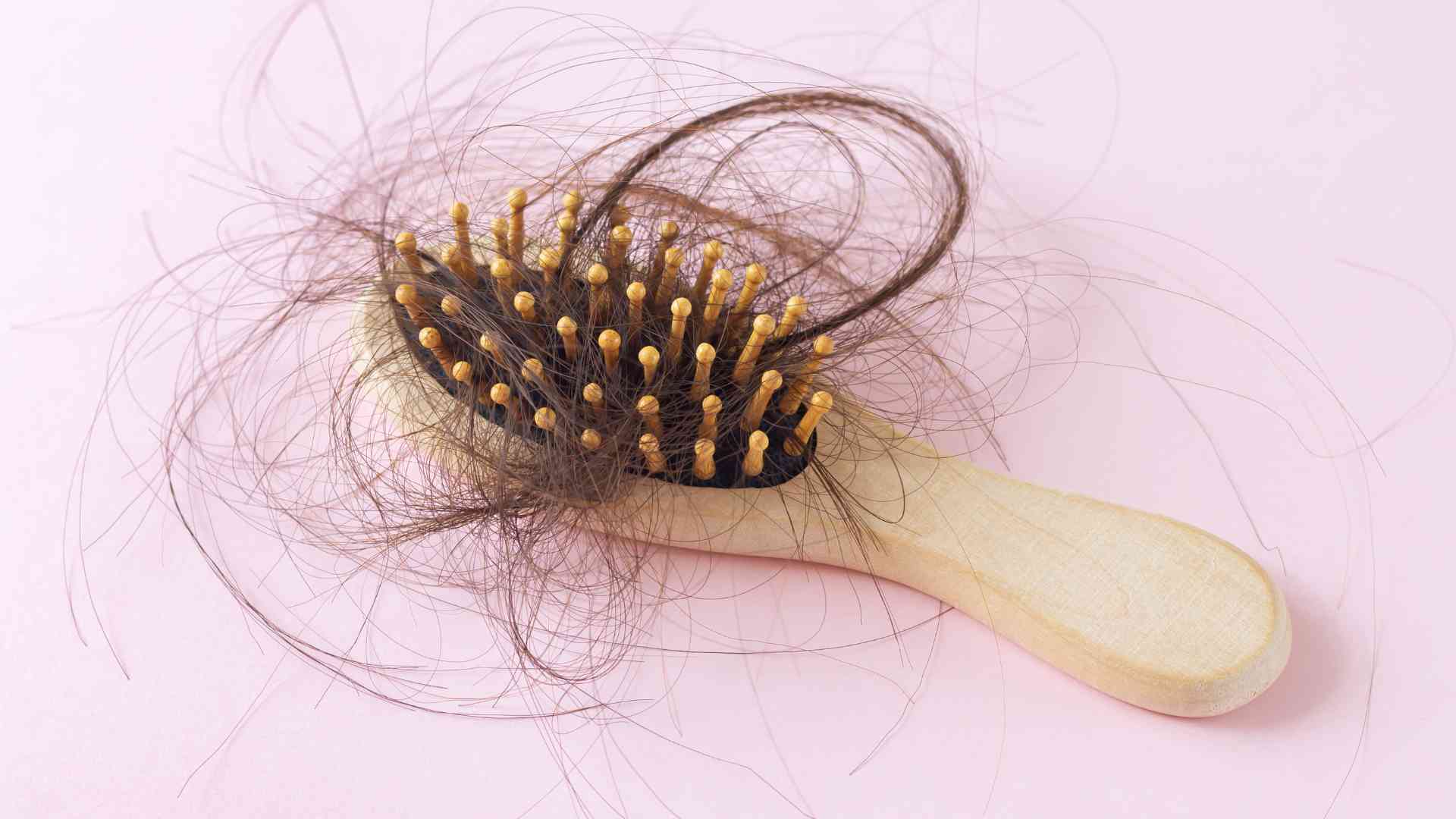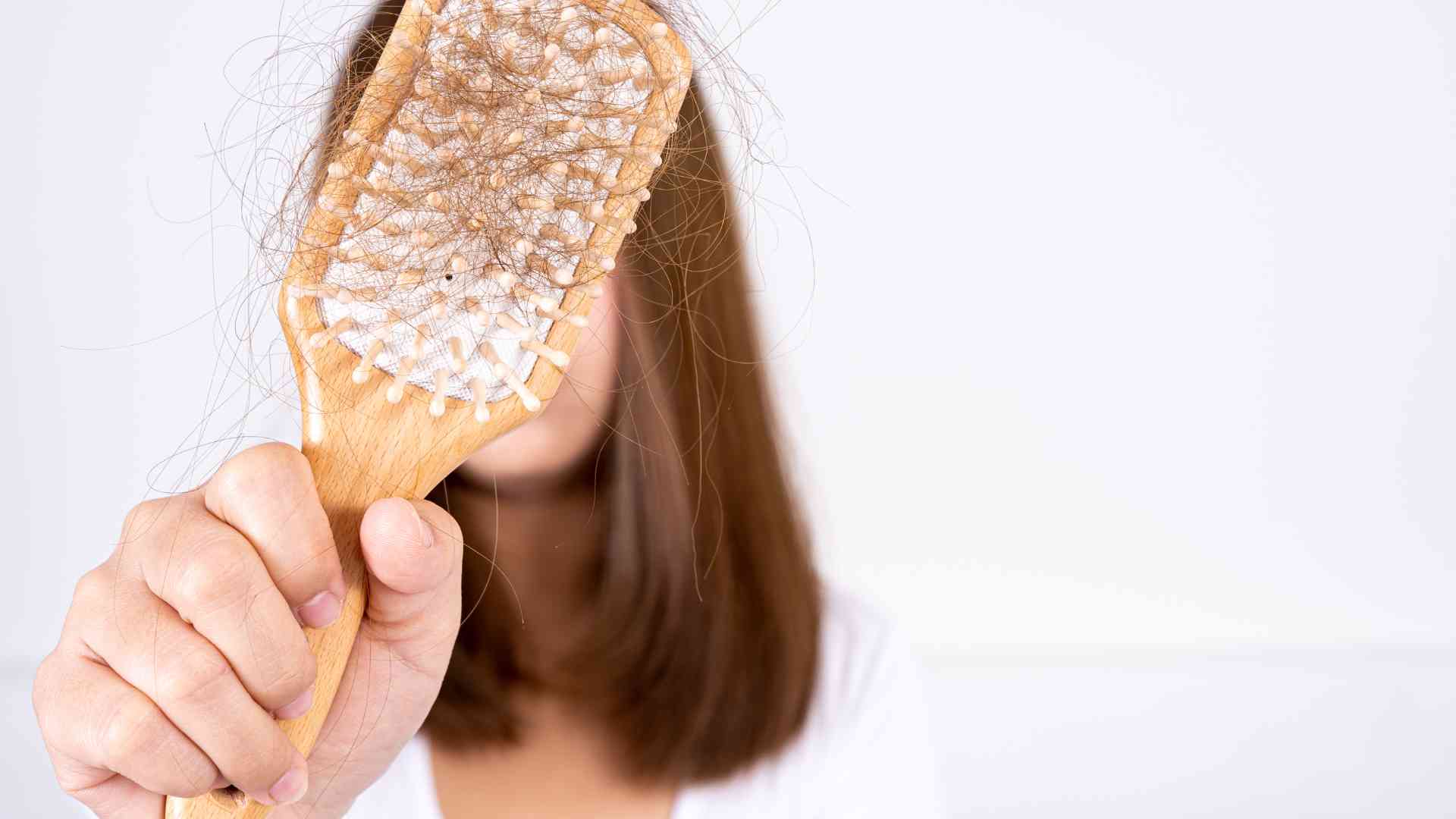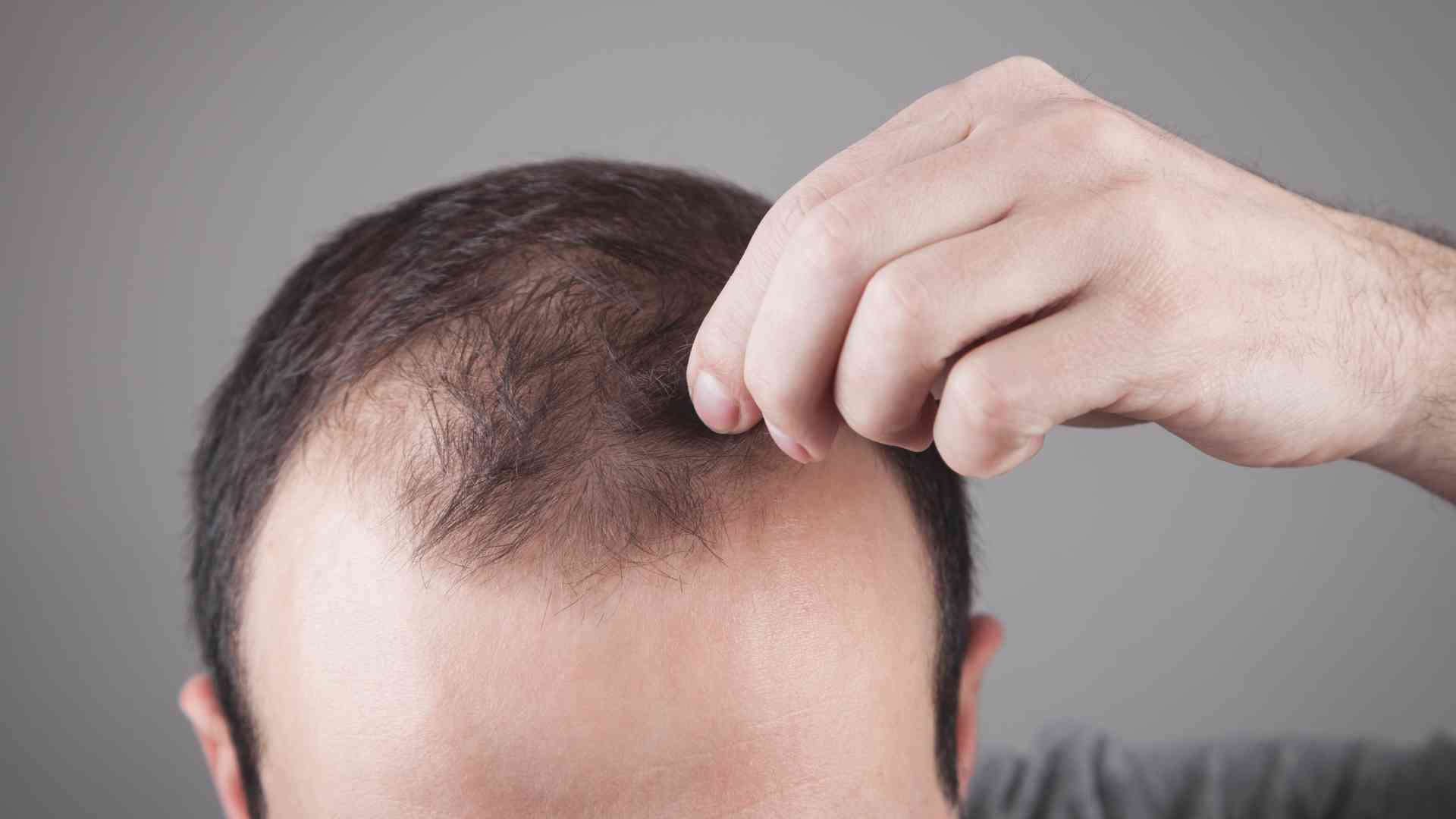In the pursuit of holistic well-being, the significance of hair health cannot be overstated, as it profoundly influences an individual’s self-confidence and overall sense of identity. Beyond aesthetics, hair health serves as a barometer of one’s inner vitality and balanced lifestyle. While factors like nutrition, genetics, and grooming practices are commonly acknowledged contributors, the impact of sun exposure on hair health is frequently overlooked. As the sun’s rays bestow warmth and energy, they also carry potential harm, subtly affecting hair texture, color, and overall resilience.
This article delves into an often-unexplored realm – the intricate relationship between excessive sun exposure and its potential consequences for hair health. As our understanding of the sun’s effects on the skin has expanded, it is essential to extend this inquiry to our hair. By shedding light on this connection, we aim to unravel the mechanisms through which prolonged sun exposure might contribute to hair loss or diminished hair quality. Exploring protective measures and practical hair care strategies can empower us to make informed choices for preserving both our locks and our confidence in the face of environmental challenges.
The Sun’s Ultraviolet (UV) Rays and Hair
The Sun emits various types of ultraviolet (UV) rays, each with distinct properties and effects on our surroundings. Among these, UVA (long-wave) and UVB (short-wave) rays are of particular relevance when considering their impact on hair health.
UVA rays, though less intense than UVB, penetrate deeply into the hair shaft, potentially causing long-term damage. They can weaken the protein structure of the hair, leading to brittleness, loss of elasticity, and diminished overall strength. Additionally, UVA rays can degrade the pigments responsible for hair color, resulting in premature graying and fading.
On the other hand, UVB rays primarily affect the hair’s outer cuticle layer. Prolonged exposure can lead to the breakdown of keratin, the protein building block of hair, causing dryness, frizziness, and increased vulnerability to breakage. UVB rays can also stimulate the production of free radicals, promoting oxidative stress and contributing to hair’s overall deterioration.
Both types of UV rays contribute to photoaging, a process where prolonged sun exposure accelerates the aging of hair fibers. Photoaging manifests as reduced hair thickness, compromised texture, and an overall aged appearance. This phenomenon parallels the well-documented impact of UV rays on skin, underlining the interconnectedness of hair and skin health.
Understanding the interaction between UV rays and hair is crucial in formulating effective protective measures. As we unravel the complexities of photoaging and its implications, adopting preventative strategies and targeted hair care regimens becomes paramount in maintaining hair’s vitality and countering the adverse effects of the sun’s powerful rays.
Impact of UV Rays on Hair Structure

UV rays from the sun can significantly impact the structure of hair, particularly by targeting the hair’s protective cuticle layer. The cuticle acts as a shield, guarding the inner layers of the hair shaft. However, prolonged exposure to UV radiation can compromise the integrity of this crucial layer, resulting in a cascade of adverse effects on hair health.
Firstly, UV rays can cause the cuticle to become rough and raised. This leads to an increased susceptibility to moisture loss, as the gaps between cuticle scales allow water to evaporate more readily. As a consequence, hair becomes dry, brittle, and prone to breakage. The loss of moisture balance not only affects the hair’s suppleness but also diminishes its overall resilience.
Furthermore, the proteins that form the core structure of hair, primarily keratin, can suffer degradation due to UV radiation. These proteins are essential for maintaining the hair’s strength and elasticity. However, UV rays can break down the molecular bonds that hold these proteins together. This degradation weakens the hair’s structural integrity, making it more susceptible to splitting, fraying, and breakage.
In terms of color and texture, UV exposure can induce significant changes. The pigments responsible for hair color are sensitive to UV rays, leading to color fading over time. For instance, brunettes may experience a shift towards a reddish undertone, while blondes might encounter increased brassiness. Additionally, the exposure-induced protein breakdown can cause hair to lose its natural shine and texture, resulting in a coarser, less manageable feel.
The impact of UV rays on hair structure is a complex interplay of chemical reactions and physical alterations. Understanding these mechanisms underscores the importance of safeguarding hair from excessive sun exposure. Through diligent protection, nourishment, and hydration, individuals can counteract the detrimental effects of UV radiation, ensuring their hair remains vibrant, strong, and resilient.
Oxidative Stress and Hair Damage
Oxidative stress emerges as a significant consequence of prolonged UV exposure, playing a pivotal role in the intricate web of hair damage. When the delicate equilibrium between antioxidants and harmful free radicals is disrupted due to UV radiation, oxidative stress occurs, triggering a chain reaction of potential harm to the hair and its follicles.
Oxidative stress generates an excessive production of free radicals, unstable molecules that have unpaired electrons. In an attempt to stabilize themselves, these free radicals seek electrons from nearby molecules, including those that constitute the hair follicles. As free radicals extract electrons from these molecules, they inflict damage, disrupting cellular functions and even altering DNA.
When hair follicles suffer from oxidative stress-induced damage, their ability to produce healthy, robust hair strands diminishes. The delicate balance required for optimal hair growth and maintenance is disrupted, leading to a range of potential issues. Hair follicles may produce weaker and thinner hair, causing an overall reduction in hair density. Moreover, oxidative stress-induced damage can impede the hair growth cycle, potentially leading to hair loss, thinning, and even premature balding.
The relationship between oxidative stress and hair health is a critical area of study. As we uncover the intricate mechanisms connecting UV exposure, oxidative stress, and hair follicle damage, it becomes evident that proactive measures to counteract this stress are essential for maintaining a vibrant and resilient mane. By incorporating antioxidant-rich products, a nourishing diet, and adequate sun protection, individuals can mitigate the impact of oxidative stress, fostering an environment conducive to healthy hair growth and long-term follicular vitality.
Sunburned Scalp and Hair Loss
The scalp, often neglected in our sun protection regimen, stands as a highly vulnerable area prone to sunburn. With its thin skin and proximity to the sun’s intense rays, the scalp is susceptible to the same degree of damage as other exposed skin surfaces.
Sunburned scalp can have consequences beyond immediate discomfort. The sun’s UV rays can inflict damage to the hair follicles that reside within the scalp. When these follicles are subjected to excessive UV radiation, their structure and function may be compromised. This damage can disrupt the hair growth cycle, potentially leading to temporary hair shedding. While the shedding is generally temporary, it can be distressing to observe.
Protecting the scalp from sunburn is paramount in maintaining both hair health and overall comfort. Donning a wide-brimmed hat or applying a protective sunscreen specifically designed for the scalp can act as a shield against harmful UV radiation. By creating a barrier between the scalp and the sun’s rays, these protective measures mitigate the risk of sunburn and subsequent hair follicle damage.
Incorporating scalp protection into our sun care routine is as essential as safeguarding our skin. The health of our hair, along with the preservation of its growth cycle, hinges on this proactive approach. By prioritizing scalp health, we ensure not only the prevention of temporary hair shedding but also the promotion of an environment conducive to robust and vibrant hair growth.
Prevention and Protection: Strategies for Hair Health

Preserving the health and vitality of your hair under the sun’s relentless rays necessitates a combination of thoughtful strategies and protective measures. Here are some effective approaches to prevent sun-induced hair damage:
- UV-Protective Hair Products: Incorporate UV-protective hair products into your routine. Look for leave-in conditioners, serums, or sprays that contain SPF. These products create a barrier between your hair strands and the sun’s harmful rays, minimizing the potential for damage. Regular application helps maintain moisture balance, prevent color fading, and shield against the adverse effects of UV radiation.
- Wearing Protective Hats or Scarves: One of the most straightforward yet effective methods of safeguarding your hair from the sun is by wearing a wide-brimmed hat or a lightweight scarf. These accessories provide comprehensive shade to your hair and scalp, reducing the direct impact of UV rays. Opt for styles that cover your entire head, including the often-exposed areas such as the hairline and part.
- Avoid Prolonged Sun Exposure: Whenever possible, limit your time spent under the sun during peak hours, typically from 10 a.m. to 4 p.m. This reduces your hair’s exposure to the most intense UV radiation, minimizing potential damage. Seek out shaded areas or create your own shade using umbrellas or outdoor shelters.
- Regular Hydration: Keep your hair well-hydrated by using moisturizing shampoos and conditioners. Hydrated hair is more resilient to damage and less prone to dryness and brittleness caused by sun exposure.
- Protective Hairstyles: Experiment with hairstyles that offer additional coverage to your hair and scalp. Braids, buns, and updos not only shield your strands but also help prevent tangles and reduce the likelihood of sunburn.
- Nutritional Support: A well-balanced diet rich in antioxidants, vitamins, and minerals supports hair health from the inside out. Foods like leafy greens, nuts, and fruits contribute to your hair’s resilience against external stressors, including UV radiation.
- Regular Trims: Routine hair trims remove split ends and maintain the overall health of your hair. By eliminating damaged ends, you reduce the risk of further sun-induced deterioration traveling up the hair shaft.
By integrating these protective strategies into your routine, you empower yourself to enjoy the sun’s warmth and energy without compromising your hair’s health. Nurturing your hair through proactive measures ensures its longevity, strength, and vibrant appearance, regardless of the sun’s relentless embrace.
Post-Sun Care for Hair: Hydration and Repair
After exposure to the sun’s potent rays, post-sun care becomes an essential step in preserving the health and vitality of your hair. Just as you care for your skin after sun exposure, your hair requires attention and nourishment to recover from the potential damage caused by UV radiation, dryness, and oxidative stress.
Hydration is a key focus in post-sun care. UV rays can strip your hair of its natural moisture, leading to dryness, brittleness, and lackluster appearance. Using hydrating shampoos and conditioners enriched with ingredients like glycerin, hyaluronic acid, or natural oils helps restore moisture balance and fortify your hair against damage.
Deep conditioning masks serve as a vital recovery tool for sun-exposed hair. These masks penetrate deep into the hair shaft, providing intensive moisture and nutrients that repair and rejuvenate. Consider masks containing ingredients such as shea butter, coconut oil, and argan oil to infuse your hair with essential fatty acids and vitamins, enhancing its resilience and radiance.
Aloe vera and vitamin E stand out as potent ingredients for soothing and repairing sun-stressed hair. Aloe vera’s cooling properties alleviate scalp irritation and promote healing, while vitamin E acts as a powerful antioxidant that combats oxidative stress and encourages cell repair. Look for hair care products infused with these ingredients to maximize the benefits of post-sun care.
When engaging in post-sun care, remember to be gentle with your hair. Avoid excessive brushing or styling, as your hair may be more delicate after sun exposure. Opt for wide-tooth combs and detangling brushes to minimize breakage while untangling.
Incorporating post-sun care rituals into your routine completes the cycle of protection and rejuvenation. By replenishing lost moisture, repairing damage, and infusing your hair with soothing and revitalizing ingredients, you can ensure that your hair remains resilient, vibrant, and well-prepared for your next outdoor adventure.
Healthy Hair Habits and Lifestyle Choices

Healthy hair is a reflection of your overall well-being, influenced by a combination of lifestyle choices and practices. While external care is important, internal factors play a crucial role in maintaining vibrant and resilient locks.
- Balanced Diet and Antioxidants: What you consume has a direct impact on the health of your hair. A diet rich in antioxidants, vitamins, and minerals provides the necessary building blocks for hair growth and repair. Antioxidants, found in colorful fruits and vegetables, protect hair follicles from oxidative stress induced by environmental factors, including UV radiation. Essential fatty acids from sources like nuts, seeds, and fatty fish support scalp health and promote hair sheen.
- Hydration: Staying hydrated is not only essential for your body but also for your hair. Dehydrated hair is more prone to breakage and can appear dull and lifeless. Drinking enough water maintains the moisture balance in your scalp and hair, helping to prevent dryness and brittleness.
- Heat Styling and Mechanical Damage: Excessive heat styling tools like blow dryers, flat irons, and curling wands can weaken hair strands and lead to breakage. Minimize heat exposure and use heat protectant products when styling. Additionally, be gentle when detangling wet hair to avoid unnecessary stress on strands.
- Stress Management: Chronic stress can lead to hormonal imbalances that affect hair growth and quality. Practicing stress reduction techniques like meditation, yoga, or deep breathing can contribute to both your overall well-being and your hair’s health.
- Quality Sleep: Sleep is a time of repair and rejuvenation for your body, including your hair. Aim for 7-9 hours of quality sleep each night to ensure optimal hair growth and minimize the risk of breakage.
- Regular Exercise: Physical activity improves blood circulation, which in turn promotes the delivery of nutrients and oxygen to hair follicles. Engaging in regular exercise supports a healthy scalp environment conducive to robust hair growth.
- Avoid Smoking and Excessive Alcohol: Smoking and excessive alcohol consumption can negatively impact circulation and nutritional absorption, both of which are vital for healthy hair.
Remember that the health of your hair is a holistic reflection of your overall lifestyle. By making informed choices regarding your diet, hydration, stress management, and hair care practices, you empower yourself to cultivate strong, vibrant hair that exudes vitality and reflects your overall well-being.
Watch Summer sun can affect hair loss | Video
Top 5 FAQs and answers related to How Does Sun Exposure Affect Hair Loss and Health?
How does excessive sun exposure affect hair health?
Excessive sun exposure can lead to a range of detrimental effects on hair health. UV rays from the sun can damage the hair’s cuticle, causing dryness, brittleness, and increased vulnerability to breakage. They can also degrade the proteins that make up the hair, leading to overall weakening of the hair’s structural integrity. Additionally, UV exposure can lead to color fading, changes in hair texture, and an overall aged appearance due to photoaging.
Can excessive sun exposure cause hair loss?
Yes, excessive sun exposure can contribute to hair loss. Prolonged exposure to UV rays can damage the hair follicles, disrupting their normal growth cycle. This damage may lead to temporary hair shedding or even contribute to conditions like telogen effluvium, a form of hair loss that occurs due to stress on the body. While the shedding is usually temporary and the hair typically regrows once the stress is removed, protecting your hair from excessive sun exposure is crucial to prevent such issues.
How does UV radiation lead to hair follicle damage?
UV radiation triggers oxidative stress and generates free radicals in the hair follicles. These free radicals can damage the follicles’ cellular components, disrupt their functioning, and even alter DNA. This damage to the follicles can result in weakened hair growth, temporary hair shedding, and potential hair loss.
Can wearing hats or using sunscreen protect hair from sun damage?
Yes, wearing hats with wide brims or using sunscreen designed for the scalp and hair can provide effective protection against sun damage. Hats and scarves offer physical protection, creating a barrier between the hair and the sun’s harmful UV rays. UV-protective hair products like leave-in conditioners or sprays with SPF can help shield your hair from damage by forming a protective layer.
What are the best practices to prevent hair damage from excessive sun exposure?
To prevent hair damage from excessive sun exposure, consider the following practices:
Wear hats, scarves, or other protective headgear when spending time in the sun.
Use UV-protective hair products to create a barrier against UV rays.
Apply leave-in conditioners or masks to replenish moisture after sun exposure.
Avoid excessive heat styling and opt for protective hairstyles.
Stay hydrated and maintain a balanced diet rich in antioxidants and essential nutrients.
Manage stress through relaxation techniques and regular exercise.
By adopting these practices, you can minimize the risk of hair damage and potential loss due to excessive sun exposure.
Conclusion

In the pursuit of healthy and vibrant hair, it’s imperative to recognize the profound impact of excessive sun exposure on its well-being. Throughout this exploration, we’ve delved into the intricate ways in which UV rays can damage hair, from weakening the cuticle and proteins to triggering oxidative stress and follicle damage. The consequences of sun-induced hair damage encompass dryness, brittleness, color fading, changes in texture, and even potential hair loss.
However, armed with knowledge, you have the power to shield your hair from these adverse effects. Embracing protective measures like wearing hats, using UV-protective hair products, and seeking shade during peak sun hours can make a significant difference. Integrating a balanced diet rich in antioxidants, staying hydrated, and managing stress further bolster your hair’s resilience against environmental stressors.
By taking these proactive steps, you lay the foundation for long-term hair health. Just as your skin benefits from sun protection, your hair also thrives when cared for with diligence and consideration. Remember, the journey to maintaining vibrant and resilient locks is not solely an external one—it’s a holistic endeavor that involves nourishing your body, adopting healthy habits, and embracing protective measures. As you cultivate a relationship of care and attentiveness with your hair, you pave the way for its enduring vitality and radiance in the face of the sun’s unwavering embrace.
Please share this How Does Sun Exposure Affect Hair Loss and Health? with your friends and do a comment below about your feedback.
We will meet you on next article.
Until you can read, Is There a Link Between Hair Loss and Thyroid Disorders?